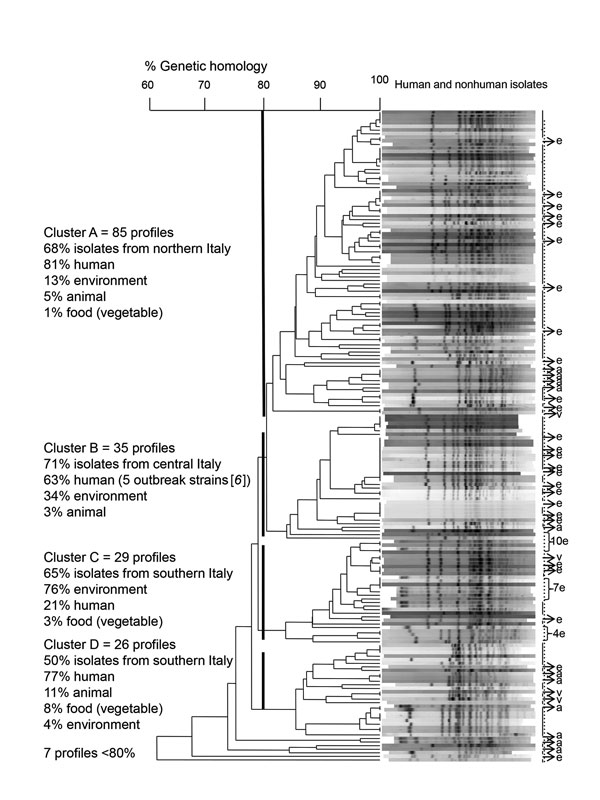Volume 24, Number 3—March 2018
Dispatch
Molecular and Epidemiologic Analysis of Reemergent Salmonella enterica Serovar Napoli, Italy, 2011–2015
Figure

Figure. Dendrogram of 182 pulsed-field gel electrophoresis–based profiles of Salmonella enterica serovar Napoli strains isolated from human, environmental, animal, and food samples in Italy, 2011–2015. Four main clusters matched with the 3 main geographic areas in Italy (cluster A in northern Italy, cluster B in central Italy, and clusters C and D in southern Italy). Genetic analysis was based on 80% homology. Human strains (n = 124) are indicated by a solid vertical line. e indicates environmental strains (n = 46), a indicates animal strains (n = 8), and v indicates food (vegetable) strains (n = 4).
Page created: March 05, 2018
Page updated: March 05, 2018
Page reviewed: March 05, 2018
The conclusions, findings, and opinions expressed by authors contributing to this journal do not necessarily reflect the official position of the U.S. Department of Health and Human Services, the Public Health Service, the Centers for Disease Control and Prevention, or the authors' affiliated institutions. Use of trade names is for identification only and does not imply endorsement by any of the groups named above.